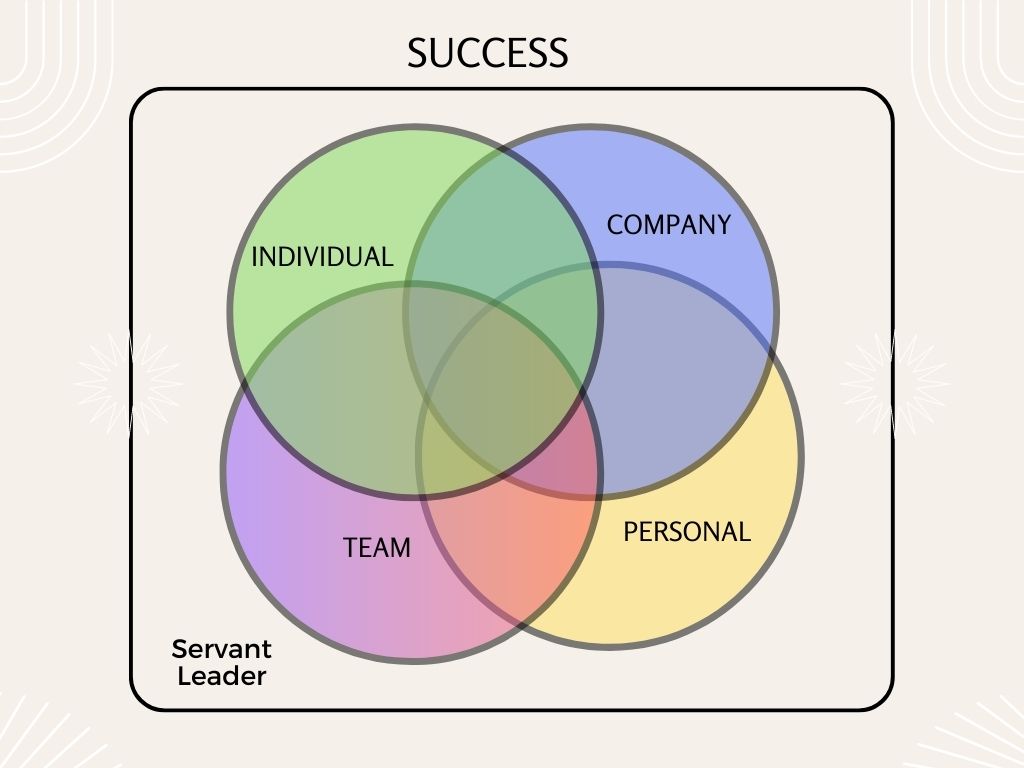What is servant leadership anyway? What does it have to do with motivation, alignment, and purpose? I’ve been reading and thinking about that lately.
When I first heard the term “servant leader” I immediately thought I understood where it came from. Many of the worst managers I’ve seen seem to gravitate towards the role because of ego and a desire to be seen as better or more successful than others.
That’s bad, as the author Ryan Holiday says in one of his books,
Ego Is The Enemy.
So my first reaction was that “servant leader” seemed like a phrase that was meant to ward off the kind of managers who create a toxic work environment in the same way garlic wards off werewolves, vampires, and your date.
It turns out it’s much more than that…
The name “servant leadership” was made up by a former AT&T executive named Robert K. Greenleaf. He wrote about it in a 1970 essay called “The Servant as Leader”. Greenleaf was trying to offer an alternative to the old-school way of leading where the person at the top tells everyone else what to do. Instead, he suggested leaders should focus on helping their team and making them feel valued.
These days servant leadership is all the rage. All the cool kids are doing it.
But why would a company want to emphasize servant leadership?
Motivation.
Why do people do anything? Really smart people who study behavioral economics and psychology have been thinking about that for decades. Some of my favorite books and TED talks about why people do things are:
Predictably Irrational: The Hidden Forces That Shape Our Decisions by Dan Ariely
TED talk — What makes us feel good about our work? by Dan Ariely
Drive: The Surprising Truth About What Motivates Us by Daniel Pink
The idea of a manager trying to “motivate” employees might make some people a bit uneasy. The key is:
Motivation is not the same as Manipulation
Motivation is about getting people to do stuff. You can motivate someone by encouraging them to take action, or to do what it takes to reach a goal. It can come from inside a person (intrinsic motivation) — that’s when they care about something, love doing it, or it means a lot to them. Or, it can come from outside factors (extrinsic motivation) like getting a prize, getting recognized, or feeling social pressure. The point of motivation is to help people do their best and keep getting better at what they do.
Characteristics of motivation:
- Motivation is positive. Motivation is about inspiring people to reach their goals and be their best selves.
- Motivation is voluntary. People who are motivated do things because they want to, not because they have to.
- Motivation is empowering. Motivation helps people feel more independent, skilled, and confident so they can make their own decisions and take action.
- Motivation is ethical. To motivate people in the right way, we need to use honest and clear methods, like giving them support, resources, and useful feedback.
Manipulation is when someone tries to control or influence another person by using sneaky, selfish, or forceful methods. The goal of manipulation is to help the manipulator get what they want, even if it hurts the other person.
Characteristics of manipulation:
- Manipulation is all about helping the manipulator, not the person being manipulated. The manipulator only thinks about what they can gain, not what’s best for the other person.
- Manipulation can be done in a sneaky, dishonest, or forceful way. The manipulator might lie, trick, or push someone into doing something they don’t really want to do.
- Manipulation makes the person being manipulated feel powerless. They might feel like they can’t make their own choices or that they don’t have control over their actions.
- Manipulation is wrong because it uses methods that are not fair or honest. The manipulator might use lies, threats, or play on someone’s feelings to get what they want, which is never okay.
Both of the Dans (Ariely and Pink) above say that intrinsic motivation is far more powerful than extrinsic motivation.
Daniel Pink says that what really motivates people comes down primarily to three factors that fit the acronym MAP: mastery, autonomy, and purpose.
Dan Ariely says that it’s super easy to destroy motivation: just deprive people’s work of purpose (or meaning).
I know what you’re thinking — “Sure, but what do all the other Dans think?”
I’m glad you asked! In his TED talk titled The Surprising Science of Happiness, social psychologist Daniel Gilbert discusses the concept of intrinsic motivation. He says people tend to overvalue external rewards, such as money or recognition, and undervalue the satisfaction that comes from simply enjoying an activity for its own sake.
According to Gilbert, intrinsic motivation is a more powerful driver of happiness and fulfillment, and people should try to find activities that provide this type of motivation rather than relying solely on external rewards.
Sorry. Got a bit carried away with Dans, I guess.
What does all this have to do with servant leadership? Servant leadership helps enable intrinsic motivation. It’s about the team as well as the individual. It’s about helping people find alignment between their own purpose and the purpose of the team and ultimately of the company they work for.
Of course, leadership success is not a simple matter of optimizing a single variable.

Yes, as a servant leader, your primary focus is on helping individual team members be successful — but in the words of late-night infomercials everywhere, that’s not all! You also want the team to succeed, as well as the company, and yes, even yourself.
Misconceptions about servant leadership:
- People often mistake servant leaders for being weak or passive. However, servant leaders are strong and confident, and they make tough decisions and hold people accountable while still focusing on serving others.
- Some think that servant leaders only care about their team’s needs and don’t care about the organization’s goals. But good servant leaders make sure both the team and the organization achieve their goals.
- Some people believe that servant leaders avoid tough decisions or conflicts, but this is not true. Servant leaders confront problems head-on, but they do it with empathy and with the best interests of their team and organization in mind.
- Some think that servant leadership only works in certain industries or cultures. However, studies have shown that servant leadership can be used successfully across different industries, cultures, and types of organizations.
- A common misconception is that servant leaders lack direction or vision for the organization. But in reality, servant leaders are often very good at thinking ahead and creating a shared vision for the organization that fits with its goals and values.
As a servant leader, of all the things you can do to help people, the most valuable is to help them discover their purpose, and to help them find a way to align their purpose with that of the company.
Related Posts
(Note: I originally wrote and published this article on medium.com on 4/24/2023)





Use the share icon here if you liked it.
Thanks!